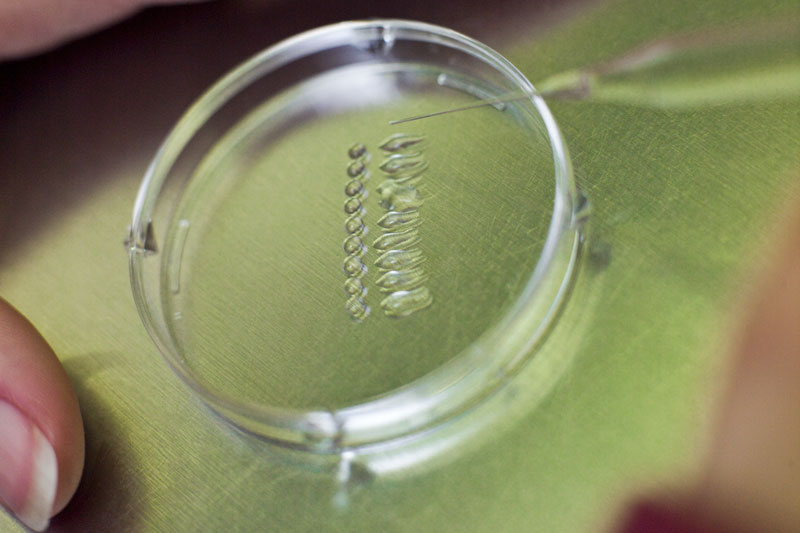IVF OR ICSI?
CLASSICAL IN VITRO FERTILISATION (IVF) OR INTRACYTOPLASMIC SPERM INJECTION (ICSI)?
In the case of classical IVF fertilisation, the eggs are fertilised as follows: the eggs are placed together with a specific number of activated spermatozoa from the husband/partner in petri dishes with special culture material and are incubated in strictly controlled culture conditions. Essentially, the spermatozoa are left alone to fertilize the egg without any embryologist intervention.
On the other hand, microfertilisation or intracytoplasmic sperm injection (ICSI) is the insertion of a single sperm into the one-cell cytoplasm. It is used in cases where there are serious problems in sperm quality (reduced numbers, low motility or poor morphology) or in cases where there has been a prior fertilisation failure with classical IVF. The steps that follow are: ovarian stimulation, egg collection, semen acquisition and sperm processing, as previously described. The cells surrounding the eggs are then removed, followed by microfertilisation (ICSI).
During microfertilisation, the embryologist, with very subtle manipulations, inserts a sperm into each egg, using a high-resolution microscope and micropipette system. The eggs are left in culture and fertilisation is checked 16-20 hours after the intracytoplasmic sperm injection.
Evaluation, embryo selection and embryo transfer are performed in exactly the same way as in classical IVF.
This method was first applied in 1992 and the following year the first child was born in Great Britain. To date thousands of children have been born with this procedure. World epidemiological studies have shown that microfertilisation does not pose a risk to the health of children born with this technique, since the percentage of chromosomal abnormalities is the same as that occurring after a normal conception.
Controlling fertilisation
The fertilisation control is carried out the next morning after the eggs collection, 16-20 hours after incubation of the eggs with spermatozoa. Any eggs that have not been fertilised or fertilised abnormally are removed. Normally fertilised eggs are again placed under culture conditions and allowed to divide. The couple is informed by phone of the exact number of fertilised eggs (zygotes).






